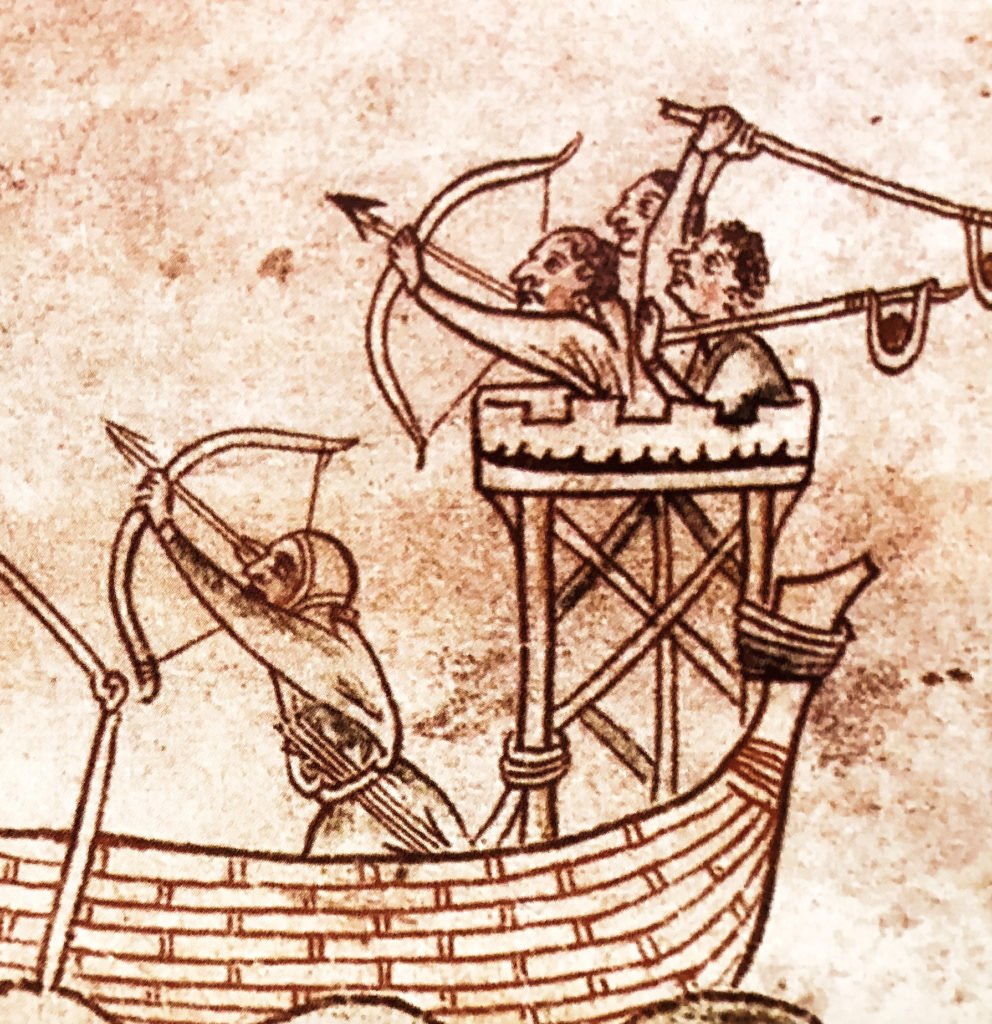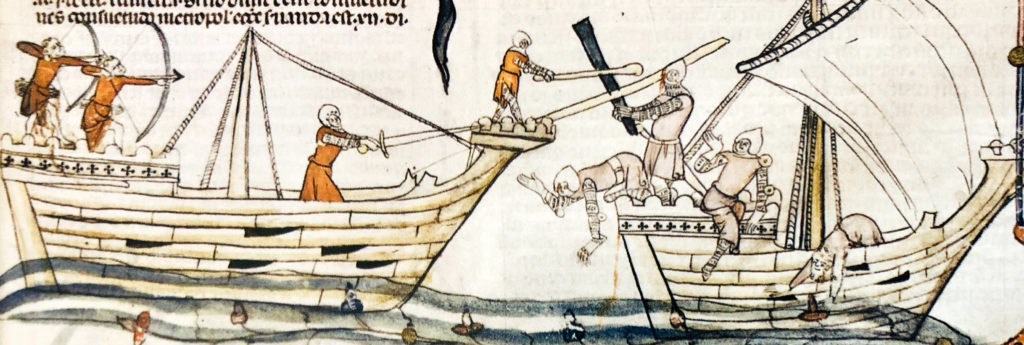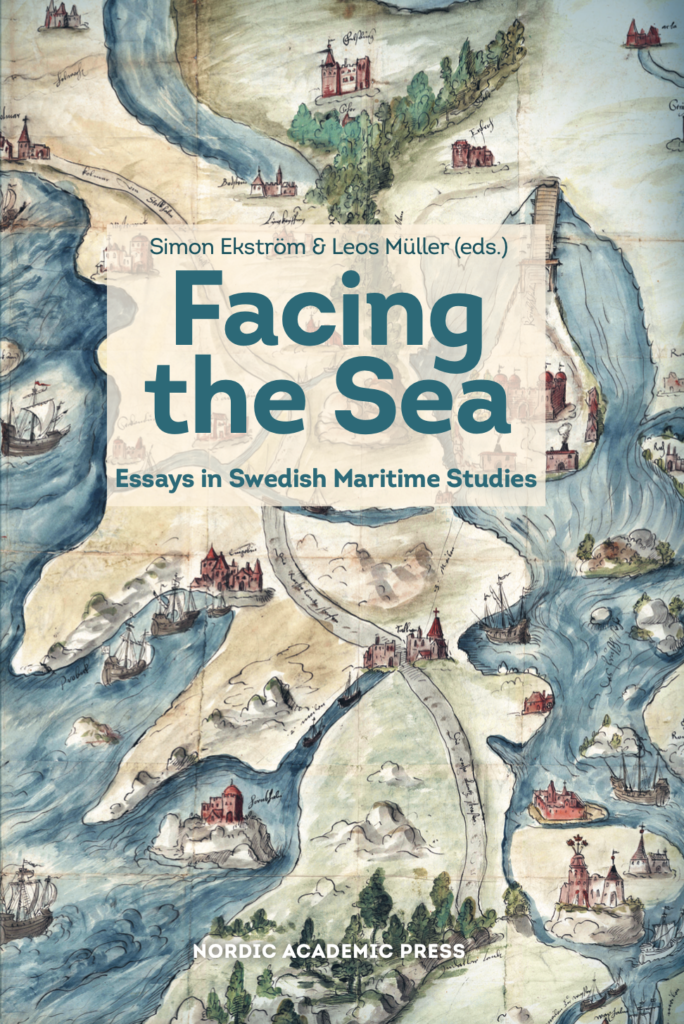A light on an intriguing corner of the archery world.
Here at Bow Towers, we were excited to receive a book that featured one of the least explored areas of study: maritime archery. The book is called Facing The Sea, a readable academic work in English from the researchers at the Centre For Maritime Studies (CEMAS) at Stockholm University in Sweden. The contributors are historians, ethnologists, and maritime archaeologists associated with the centre.
The chapter “Maritime military archery: bowmen on European warships” was written by Henrik Arnstad and Abigail Christine Parkes about naval uses of archers, which have a history spanning three millennia. While there are a few famous stories about bowmen on ships, such as the tale of the Japanese warrior Minamoto no Tametomo, the authors have concentrated the study on European waters between 1000 and 1600, the peak of naval archery. It is a period only previously written about by longtime Bow correspondent Hugh Soar.
In several navies around the world, the use of combat archers on ships actually influenced the construction of warships, with vessels built with raised platforms and scaffolding to allow archers to shoot from above. There are tales of Venetian archers who “showered arrows from on high on their enemies”.

Specialist arrows were developed, including fire arrows, arrows equipped with lime bags – essentially a form of chemical warfare to blind enemies – pig bladders filled with oil, and specially shaped points for cutting through ropes and sails.
The military rise of the English longbow is usually celebrated with the victories at Crécy and Agincourt; however, it proved itself even before that at the Battle of Sluys, off the coast of Flanders, in 1340. Some 150 ships carrying 7,000 bowmen attacked a French fleet featuring crossbowmen, whose low rate of fire was no match for the showers of arrows delivered by the English archers.
Like Agincourt, it was ultimately a grimly violent affair, with wounded men thrown overboard to drown. Later, in the Tudor era, longbows were still very much part of the armoury, as the authors discuss in new detail the finds from the Mary Rose.
There is much more here and, as well as the archery chapter, you can also read about smugglers from the Aland Islands, British privateers seizing Swedish ships, and what the salvage of a shipwreck can say about past and present societies – and why more and more Swedes choose burial at sea.
It’s a smörgåsbord of Swedish experiences of the ocean, and if that sounds like your sort of thing, it probably will not disappoint.




